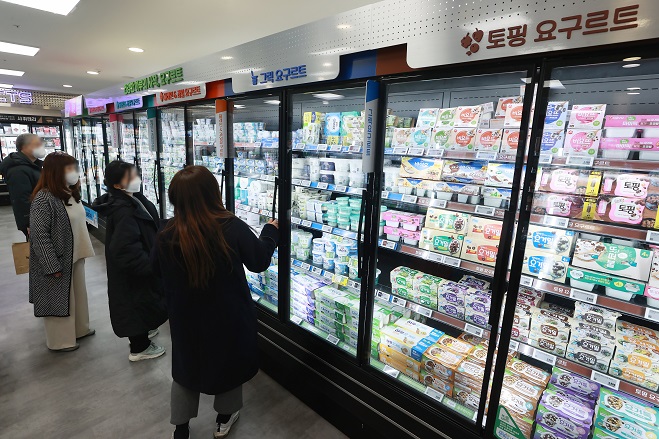
People shop for groceries at a supermarket in Seoul in this file photo taken on Feb. 13, 2023. (Yonhap)
SEOUL, Feb. 23 (Korea Bizwire) — Household income advanced 4.1 percent on-year in the fourth quarter on the back of the improved job market, data showed Thursday, although the actual profit lost ground amid higher inflation.
The country’s households earned an average 4.83 million won (US$3,700) per month in the October-December period, compared with 4.64 million won tallied a year earlier, according to the data from Statistics Korea.
When adjusted for inflation, however, the income moved down 1.1 percent.
In the fourth quarter, profits earned through wages moved up 7.9 percent on-year to an average of 3.12 million won per month.
In 2022, South Korea added 816,000 jobs on-year, driven by the post-pandemic recovery.
The monthly average income from business operations remained unchanged at 1 million won, due to higher prices of raw materials.
On the other hand, transfer income backed by state support slid 5.3 percent over the period to 570,000 won as the government scaled down pandemic-related compensation and subsidies.
Monthly household spending on consumption goods moved up 5.9 percent to reach 2.69 million won as people spent more on restaurants, accommodation, transportation and entertainment.
However, when adjusted for inflation, the growth came to just 0.6 percent.
South Koreans’ spending on household products, food and alcoholic beverages fell on-year, the data showed.
Households’ average propensity to consume, measured by the percentage of consumption expenditures out of disposable income, advanced 1.7 percentage points on-year to 69.1 percent in the fourth quarter, the data also showed.
The average monthly income of the bottom 20 percent income bracket rose 6.6 percent on-year to 1.12 million won. Those in the upper 20 percent group made 10.42 million won, up 2.9 percent from a year earlier.
The country’s distribution ratio for disposable income, a key barometer of earnings equality, reached 5.53 in the third quarter, down from 5.71 tallied a year earlier. A lower ratio means narrowed inequality in income distribution.
It means that the top 20 percent income bracket had 5.53 times more earnings than those in the bottom 20 percent over the cited period.
(Yonhap)






